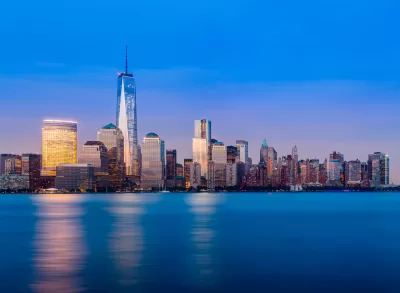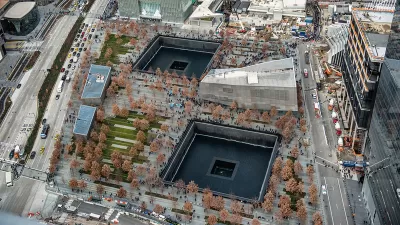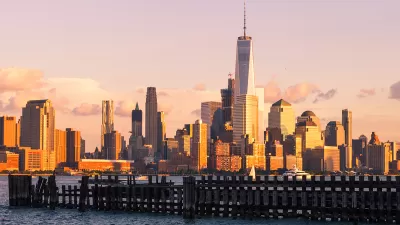Despite predictions that the events of September 11, 2001 would be the end of skyscrapers, U.S. cities are building more tall buildings than ever.

In the days following 9/11, "[a] Chicago developer told Chicago Tribune architecture critic Blair Kamin that American cities shouldn’t allow new skyscrapers that could 'be viewed as a magnet for future terrorism,'" and Americans wondered whether they would ever feel safe in tall towers again. Yet since 2001, "a dozen towers have gone up in Chicago that top 700 feet," writes John King, and other cities are seeing similar rates of construction.
According to Carol Willis, director and curator of the Skyscraper Museum in New York, "there are strong forces that cause towers to grow when there are good economic conditions. They’re weeds." As the rebuilt towers went up in place of the fallen World Trade Center, "[p]eople were reminded that tall buildings can express the spirit and potential of large cities." Today, the area surrounding Ground Zero "is ringed with towers that include the 1,776-foot One World Trade Center, the nation’s tallest building."
"In terms of a city’s daily life, the best towers are the ones that give something to the public. They’re approachable, with shops and cafes and nooks that are open to people who never enter the high-rise lobby." In San Francisco, says King, "when you walk along Folsom Street, or cut through landscaped mid-block plazas that didn’t exist before, the skyline show is secondary to the pedestrian environment slowly starting to emerge." According to Brian Lee, a consulting partner at Skidmore Owings & Merrill in Chicago, "[b]uildings should be meaningful for your time. If it’s just arbitrary shaping, that’s super-disappointing."
FULL STORY: 9/11 was supposed to end the age of skyscrapers. Instead, there are more now than ever

Alabama: Trump Terminates Settlements for Black Communities Harmed By Raw Sewage
Trump deemed the landmark civil rights agreement “illegal DEI and environmental justice policy.”

Planetizen Federal Action Tracker
A weekly monitor of how Trump’s orders and actions are impacting planners and planning in America.

Why Should We Subsidize Public Transportation?
Many public transit agencies face financial stress due to rising costs, declining fare revenue, and declining subsidies. Transit advocates must provide a strong business case for increasing public transit funding.

Understanding Road Diets
An explainer from Momentum highlights the advantages of reducing vehicle lanes in favor of more bike, transit, and pedestrian infrastructure.

New California Law Regulates Warehouse Pollution
A new law tightens building and emissions regulations for large distribution warehouses to mitigate air pollution and traffic in surrounding communities.

Phoenix Announces Opening Date for Light Rail Extension
The South Central extension will connect South Phoenix to downtown and other major hubs starting on June 7.
Urban Design for Planners 1: Software Tools
This six-course series explores essential urban design concepts using open source software and equips planners with the tools they need to participate fully in the urban design process.
Planning for Universal Design
Learn the tools for implementing Universal Design in planning regulations.
Caltrans
Smith Gee Studio
Institute for Housing and Urban Development Studies (IHS)
City of Grandview
Harvard GSD Executive Education
Toledo-Lucas County Plan Commissions
Salt Lake City
NYU Wagner Graduate School of Public Service




























